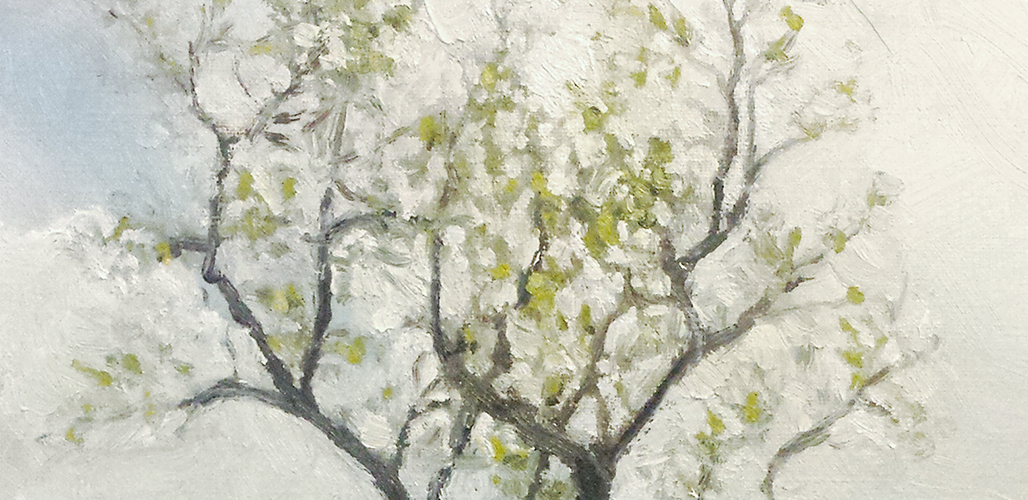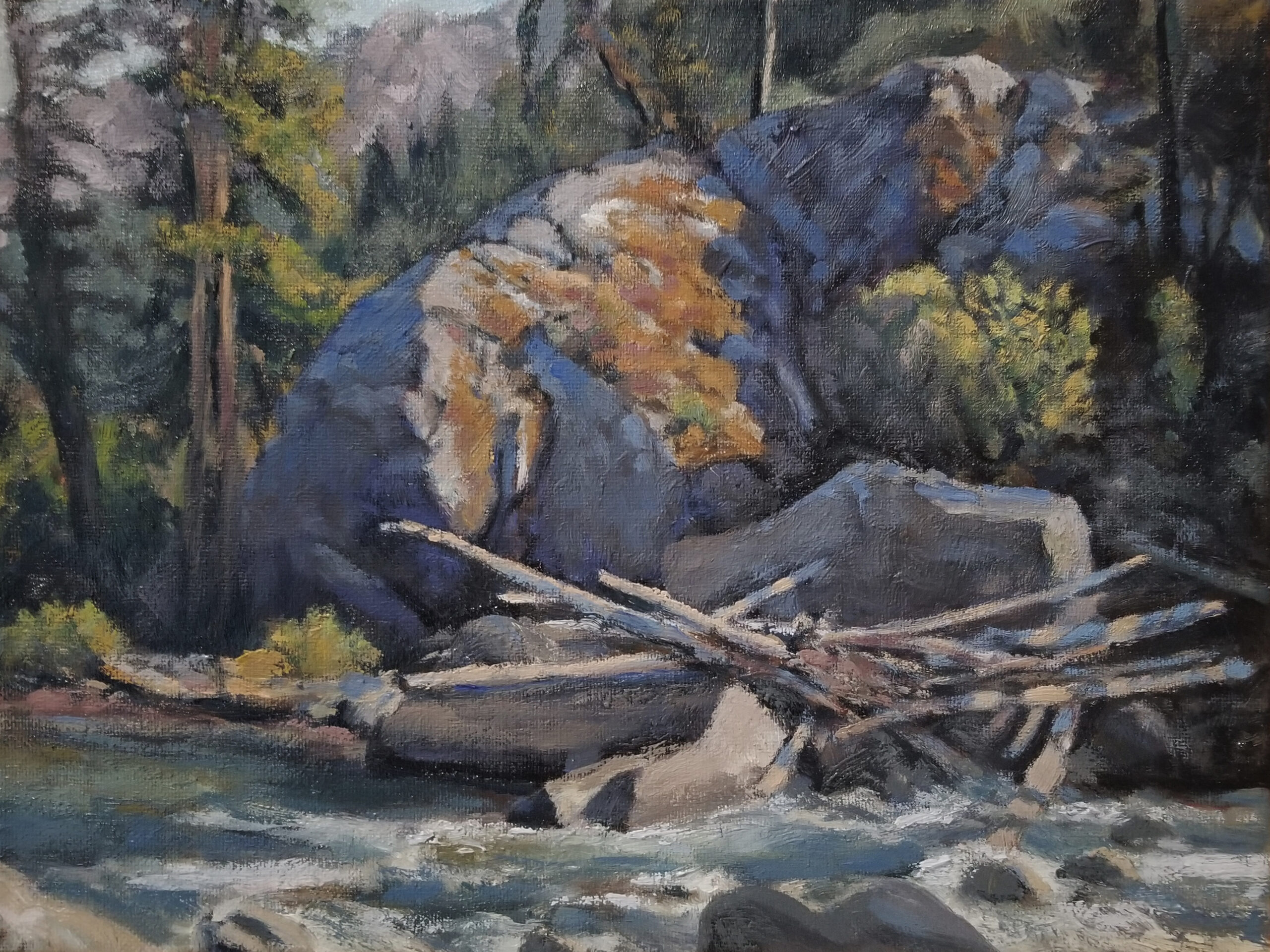
Icicle Creek Guardian Art Print


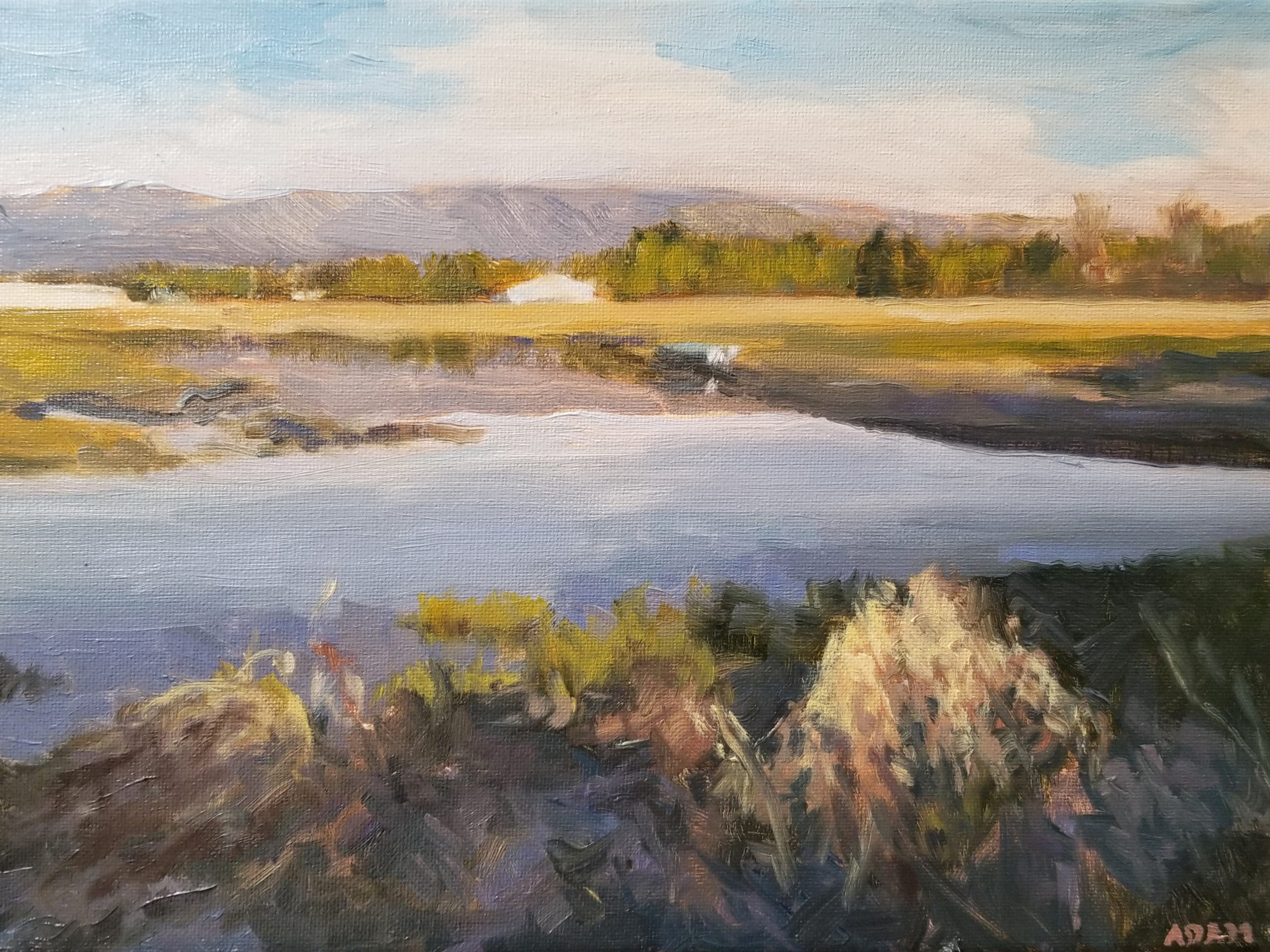
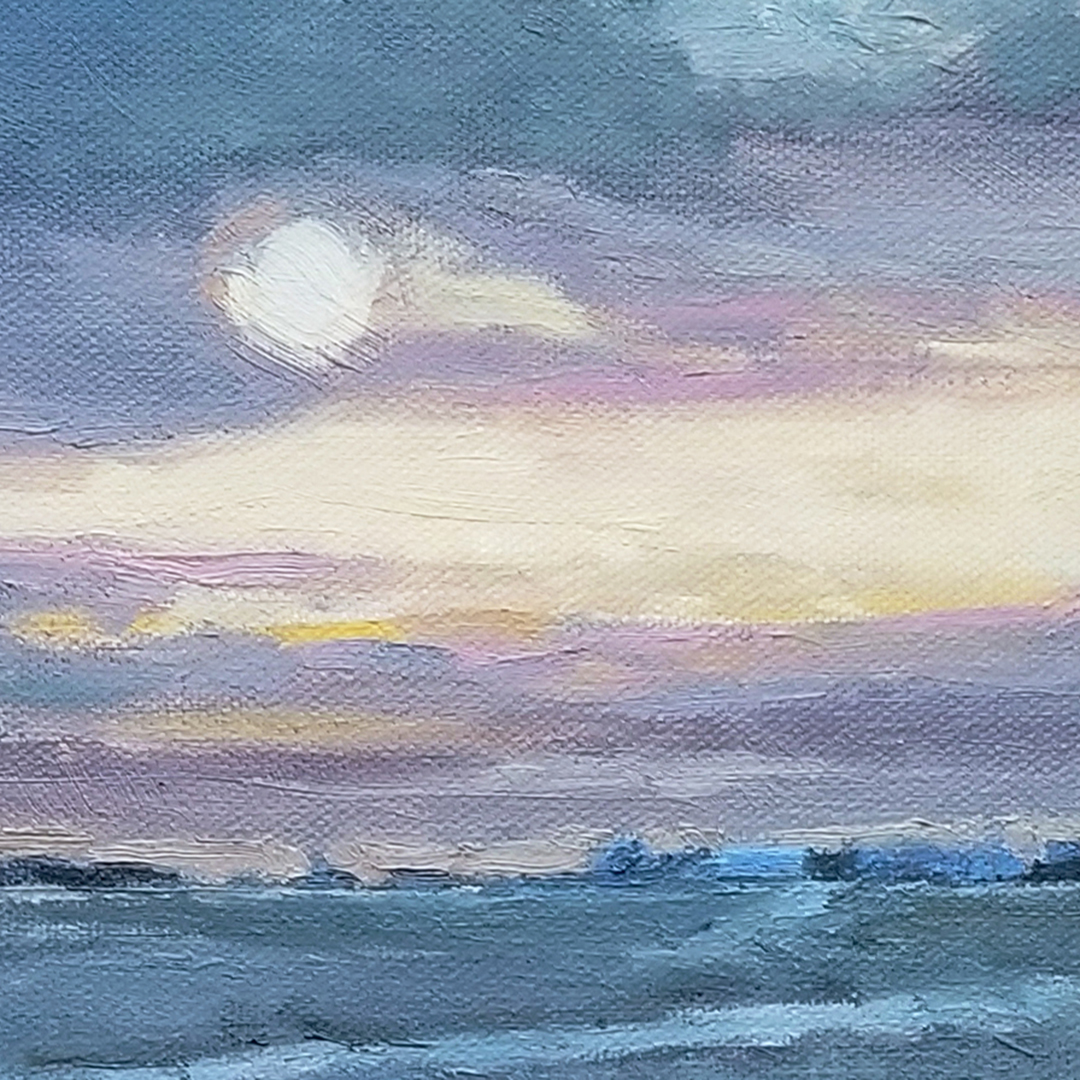

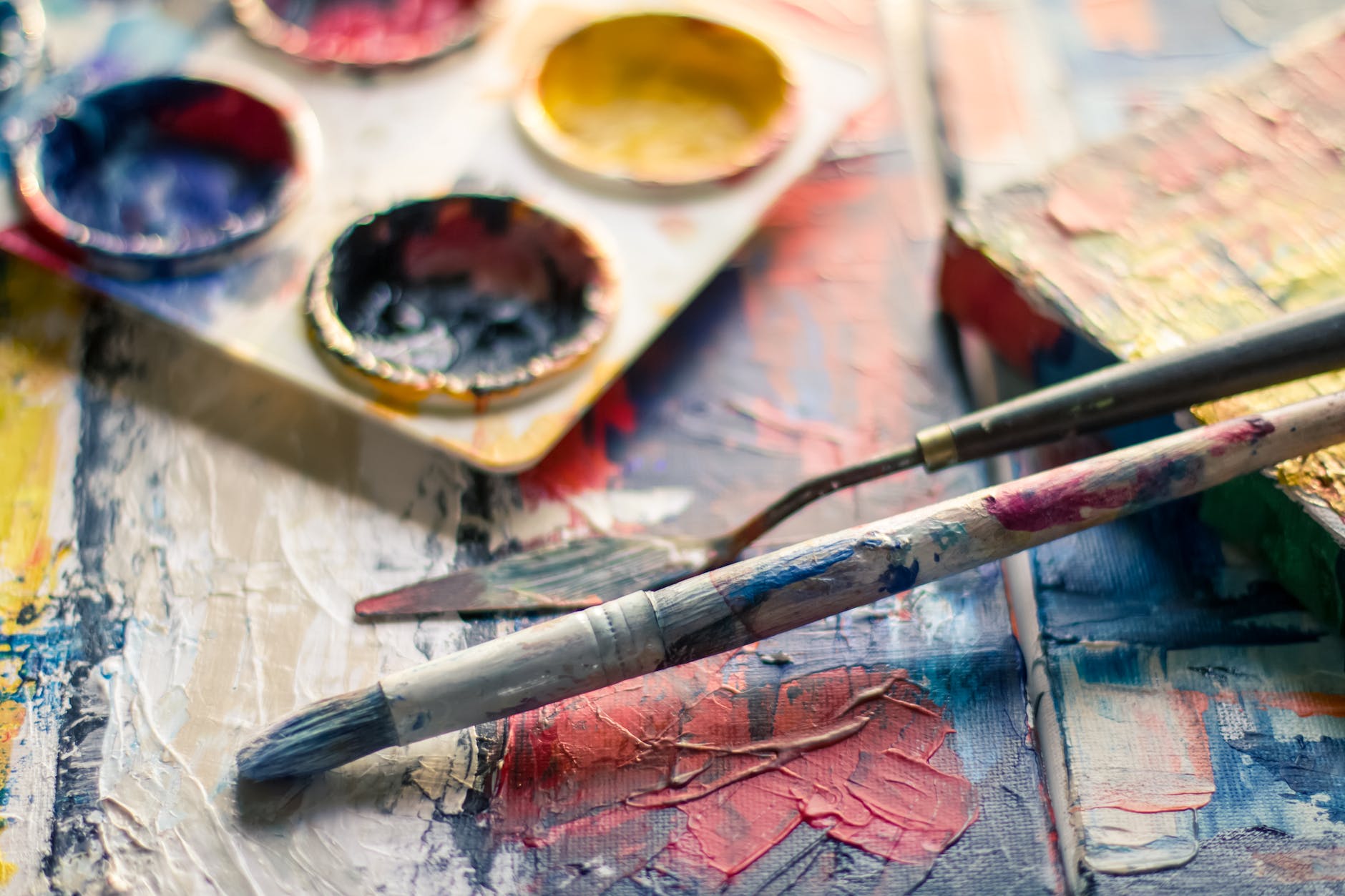
In our modern world, surrounded by constant distractions, bad news, angry opinions, and an overwhelming sense of general anxiety, one of the greatest and most rewarding hobbies is painting. There are dozens of incredible benefits to painting, including a reduction of stress, increase in brain activity, and the joy of satisfaction. Painting tickles the brain in all of the best ways. But when dealing with painting for beginners, what is the best medium?
There are three big choices in front of you when you decide you want to start painting.
Besides these, there are others that branch off into different, more specific directions. Among them is gouache, tempera, casein, and pastels. There are also practices with these different mediums that can range from spray-paint or airbrush to mixed media projects. This article will not be delving into those subjects. Just know that if the three mediums we discuss don’t exactly pique your interest, there are other options.
We’re considering three things when looking at these mediums and what we think is the best painting medium for beginners.
These three aspects help you make an informed decision when it comes time to visit the local art store or make your online purchase. Keep in mind that there are many art-related YouTube channels (including my own) that can help you get a better idea of what the medium will be like to work with.
Oil paint is my personal favorite. That may be because I made a concerted effort to learn it and make it my main medium of choice. I feel very comfortable with it right now and I do love the way it looks when it is finished. Let’s go over it more closely.

Elsie Palmer, John Singer Sargent, 1890, oil on canvas
Oil paint might be considered by some to be the trickiest of the three options here. That can often come down to preferences in drying times. While oil paint doesn’t technically dry, but “sets”, it is still important to consider how long it can take to work with one painting. Many of the paints you will purchase from the art store will take a few to several days to set completely and experts even recommend waiting an entire six months before varnishing an oil painting, due to the duration you need for oil to set properly.
However, with slower drying times comes more flexibility. If you make a mistake with oil or want to change some aspect of your painting, it is easier to accomplish when the paint is still wet. This is much easier with oil than acrylic or watercolor which are less forgiving in this way. You can almost think like oil paint as “charcoal” compared to acrylic’s “pencil” or watercolor’s “ink”. It will give you greater freedom to move it around and make the changes or fixes you need to.
There are many ways to alter the use of oil medium by introducing additional oils or solvents. You can make the paint thicker or more prone to drying fast. You can make it easier to spread thinly or simpler to manipulate in flat strokes. The paint can have a semi-opaque quality depending on the pigments of some colors, which can help you layer “glazes”, bringing rich color in a way similar to watercolor painting. It is worth noting that water is not used as a lubricant or solvent, as it will not mix well with the oil. You should only use it when cleaning the brush at the end of your process.
All of these techniques take time and practice to acquire. While it is silly to say that oil paint is simple to work with in its most advanced forms, you can work straight from the tube with some stiff or semi-stiff brushes and achieve wonderful results. You can also use a palette knife to paint and get great textures. Oil paint is simple to use, at its heart, with plenty of room to move further into complexity and difficulty.
The last important thing to mention is how easily oil paint blends. This is a double-edged sword. Many beginning oil painters have difficulty because they use too much oil paint all at once, ending up with muddy colors. It is better to start with less paint and then work towards using more over time. This will also help you stick to the general “fat over lean” oil painting technique. This is important to reduce cracking of the paint layers. It dictates that you start with thin layers of paint then increase the amount of oil in your paint as you add layers to the canvas.
Oil paintings are often regarded as being the most well-received and admired works in the art world. While many of the most renowned artists and movements utilized oil as a medium and many of the most expensive art sold was made with oil paint, it might be overstating the importance of the medium to put it above the crowd for these reasons.
Oil paint can maintain its vibrance and have great color depth when handled properly. The resulting paintings have a wide amount of variety depending on the artist’s methods. However, it is usually a bit easier to recognize an oil painting based on the way the paint sits in its layers. There can be a bit of blending, both through mixture and through the effects of transparent pigments layered over opaque pigments. There is often a sense of smoothly textured strokes of paint that still maintain a certain amount of mass.
The techniques of oil painters often differ from those of watercolor and acrylic painters. There is a stylistic quality to oil paint that you may often recognize (although this is not always that easy to see).
Since oil paint is easily blended, it can be hard for beginning artists to get the results they want. Sometimes paintings end up muddy-looking or blander than hoped for. Just being patient and working slowly is a great way to start. You can always increase your efficiency and speed over time.
Oil painting can be an expensive hobby. Many of the costs come down to the main materials you will be using – paint, brushes, and surfaces. The paint itself is more expensive than acrylics, but comparable to watercolor (though this can vary significantly from brand to brand). Brushes can be hard to maintain for beginners, so they can be an added expense (and good brushes aren’t exactly cheap). To prolong the life of your brushes, just try to clean them regularly. You can also rest them in walnut oil, which will make the paint easier to remove and keep your brushes nice and silky.
Most oil painters will use either canvas or wood panel as their ground, or working surface. This usually comes at a higher cost than a pad of watercolor paper, though – again – products vary by quality. You can easily get a pad of canvas paper. This won’t be that useful for hanging your art, but it is great for practicing your craft.
Then there are intangibles, such as a palette knife, paper towels, oil medium, solvent, and an easel, among other things. These have varying degrees of importance and you can use or introduce them as you need to or want to.
Painting for Beginners: Oil paint is the best for those who want to work with blending, layers, and slow-drying paint.
Picking the Right Paint Brushes for Oil Paint
Most people start painting with acrylic paint. Not only is it easy to get a hold of, but it is also generally easy to work with. It is used in classrooms and elementary schools, as well as learning studios. It is usually pretty simple to set up and clean up. Let’s dive in a bit.

A Bigger Splash, David Hockney, 1967, Acrylic on canvas
Beginners will find acrylic paint very easy to try out and get the hang of. Acrylic paint is essentially large color pigments bound by a polymer. Through mixing and layering paint, artists will be able to create works very quickly, without much fear of accidentally blending their layers. The paint dries very quickly, which means that it loses some of its flexibility, but gains a straightforward application method.
Many beginners will see this medium as a good jumping on point because it is so easily related to other artistic implements that we are used to from a young age. The immediacy of colored pencils, markers, and crayons is easily reflected in acrylic paint. The main downside to this is the fact that you might have to work quickly, as the paint will dry on your palette. There are mediums that you can introduce to your mix which will help to keep the paint wet longer.
Acrylic paint is generally easy to spread on your surface, having a creamy quality. It can dry to the brush pretty easily and quickly, so it is best to have some water and cloth or paper towels nearby to keep your brush clean. Little bits of dried or tacky paint can ball up and get into your fresh paint, otherwise.
Many artists like the way acrylic paint looks when it has dried, but some do find it too dull or too glossy. This will depend on the quality of paint you are using. The lower priced paint can dry at different shades than you are seeing when you paint, which can be frustrating. It can also have coverage issues, where it does not spread nice and opaque. Mixing a little bit of titanium white or some other opaquer paint might help.
Acrylic paint is great for working on various surfaces and is often used in mixed media. It doesn’t have the same corrosive qualities of oil paint, so there is no fear of damage over time. It also doesn’t absorb into surfaces the way watercolor can, so it is a more exact medium. This can free you up to create a wide variety of unique works and end up with a myriad of results.
To get the best results from your acrylic painting, you might consider varnishing. This brings out the colors and values much more and usually results in a more vibrant painting. It also protects the painting from dust and damage. Before applying a varnish, it is important to let the painting dry at least 24 hours. Then an isolation coat should be added to prevent the varnish from sticking permanently to the paint. Wait another 24 hours, then add the varnish of your choice, being careful not to use too much.
Acrylic Paint is the least expensive of these options and is pretty easy to get ahold of. Of course, most acrylic paint that you will find in general stores is pretty cheap and of low quality. You can find higher quality acrylic paint online and at specialty art stores. Even still, it is relatively inexpensive and easy to get.
Notably, acrylic paint is best used with a plastic or glass palette. Wood palettes have too much absorbency, and most acrylic painters who have tried them end up frustrated. This is usually pretty cost-effective. You don’t tend to need a huge palette when starting out. It is best to use small amounts of paint to help conserve your supply and prevent it from drying.
The best brushes for acrylic paint have a spring to them and are able to hold up to repeated use. This is why most acrylic painters use synthetic brushes, which also cost less and are easier to clean. Having a variety of sizes and shapes can be helpful. As a beginner, it’s best to keep things simple going in, though, and just make sure you have a couple of flats, filberts, and rounds, in a few sizes.
Painting for Beginners: Acrylic paint is the best those who want to work directly, with opaque layers and less blending.
Synthetic Brushes from Dick Blick
Professional Acrylic Paint from Dick Blick
A hugely popular medium, watercolor does many unique things that are more difficult to achieve with oil or acrylic. It is versatile to work with and can be used in many styles. Simplicity of function works together with depth of complexity to make a really interesting painting medium.

On the Trail, Winslow Homer, ca 1892, watercolor
Watercolor paint is a relatively simple medium. By wetting the paint, an artist can easily start to experiment with its potential. Using either paint pots or tubes, the artist thins the paint to a desired consistency. The paint applies to paper, which thirstily takes in the pigments. It is better to work light to dark with watercolor, though there are many methods and successful approaches.
In fact, it is this versatility that might be the biggest selling point for watercolor. There is a huge space for experimentation and use of a wide variety of tools and techniques. Watercolor also boasts a large selection of different implementations, such as watercolor pencils and sticks. Some artists also complement their watercolor paintings with ink or gouache.
All a watercolor artist needs to start is some paint, some watercolor paper, and water in at least one jar. The water thins the paint, making it easy to manipulate and achieve desired results. It can be challenging to regulate the use of water and to control blending of pigments. With practice, this becomes second nature.
Much like the medium itself, the resulting works show a wide variety of results. Watercolor is often very easy to recognize, though the styles and arrays of work can have vast differences. Because watercolor applies on paper, the end painting is often matte in finish. This is nice because glare on artwork is distracting.
There is a sense in which watercolor art is “soft” probably because it has a lot of natural gradations. The water disperses the pigments around the paper, creating areas of differing values. There are ways in which an artist may achieve higher levels of contrast and crisper effects. However, watercolor generally has a soft glow to it.
The best paints do result in wider ranges of vibrancy, so that the painting doesn’t lose its color to the effect of the water. This is a good thing because, contrary to oil and acrylic, layers of watercolor are thin. The pigments do not build up in the same way. Thoughtful artists achieve mixtures of colors through this application of thinly layered pigment.
Watercolor artwork often looks humble beside its oil and acrylic siblings. This is part of its charm, though, and is a primary reason why artists love it. It is less forgiving than its counterparts, requiring artists to be aware of what they are doing and to treat the medium differently. There is often an almost “sketchy” and lively look to watercolor art that is difficult to replicate with the other mediums.
As always, the best materials are going to be the most expensive and give you your best experience with the medium. The pigment won’t fade in the sun as quickly and the spread throughout the paper will feel smoother and satisfying. So, the overall cost may vary based on what you are hoping to achieve. Costs are comparable to oil paint, though watercolor medium tends to be used at a slower rate.
Instead of canvas, you’ll be looking for watercolor paper to work with. There is cold-pressed and hot-pressed paper. Cold press is more textured, whereas hot press is smoother. You will want to tape down the paper or use a watercolor pad with paper that is already taped around its edges. These pads of pre-bound paper are on the expensive side, though they are nice to work with.
As usual, you will find general-grade, student grade, and professional grade materials. The big differences here are affordability and quality. If you are just beginning, you might want to skip the general-grade stuff and go to student grade. It will make your experience more enjoyable.
Also remember that watercolor brushes are nice and soft, ready to soak up water and paint. They are not good for other mediums, besides gouache or other “watercolor adjacent” mediums. The cheapest versions usually wash away the hairs which can be very frustrating. So be sure to consider investing in some better materials if you want to give the medium a fair shake.
Painting for Beginners: Watercolor is the best those who want to experiment and work quickly with less fuss.
Professional Watercolor Paints from Dick Blick
Watercolor Brushes from Dick Blick
It’s not exactly a science, is it?
Any beginner artist has a choice in front of them and there isn’t a wrong path to take. There might not be a best painting medium for beginners. You should consider a few things before jumping in.
If you stick to these criteria, you will undoubtedly make a great choice. And remember, you can always experiment with any of them! Though I mostly paint with oil, I am very excited to get more experience with watercolor. I’m getting to a point where I want to work more quickly and take on a different challenge with different complexities.
So, at the very least you have some examples and knowledge that can help you make an informed decision. I hope this article was helpful to you.
Speaking of painting for beginners, I am always open to taking on private lesson students. I offer one free half-hour to get an idea of what your goals are and how we can get you to them. Then I design a specific lesson plan for you and we go from there. You can hire me for your personal lessons here at SuperProf or here at LessonFace.
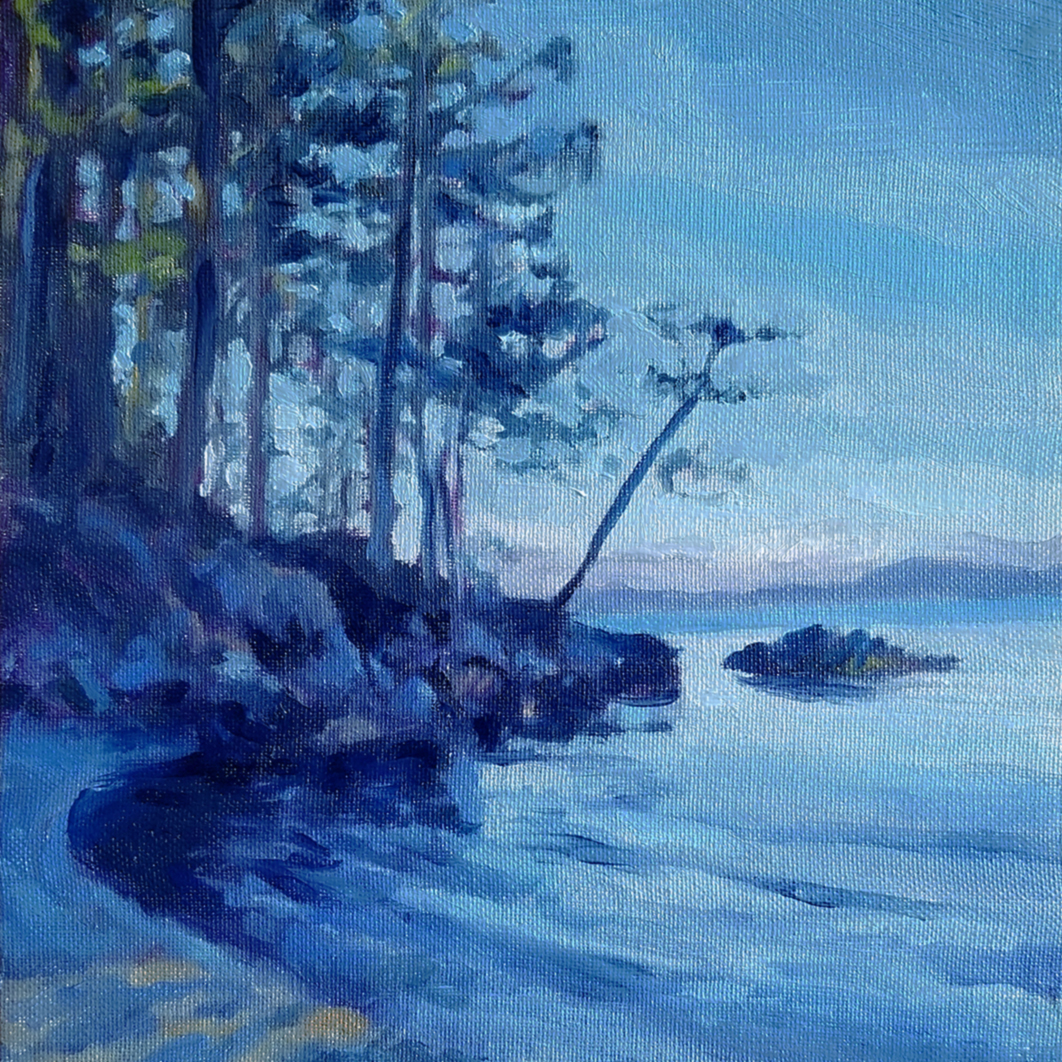

Paintings very rarely do justice to the subjects they represent, but they do serve as nice reminders that we can use to go back in our minds to a special time. My wife and I went to Anacortes last year for her birthday. We stayed in a small and relaxing Airbnb, ate at a fantastic Italian restaurant (complete with accordion player), and spent the morning searching the local park beach for shells and colorful rocks. This view was down at one end of the beach, prompting me to take a snap of it for an eventual painting. With a little bit of imagination, I can feel the breeze and smell the salt water, reliving the peaceful moment.
BTW, did you know that just being near water can have an impact on your health and peace of mind?
You can purchase a signed and numbered print of this beach scene here.
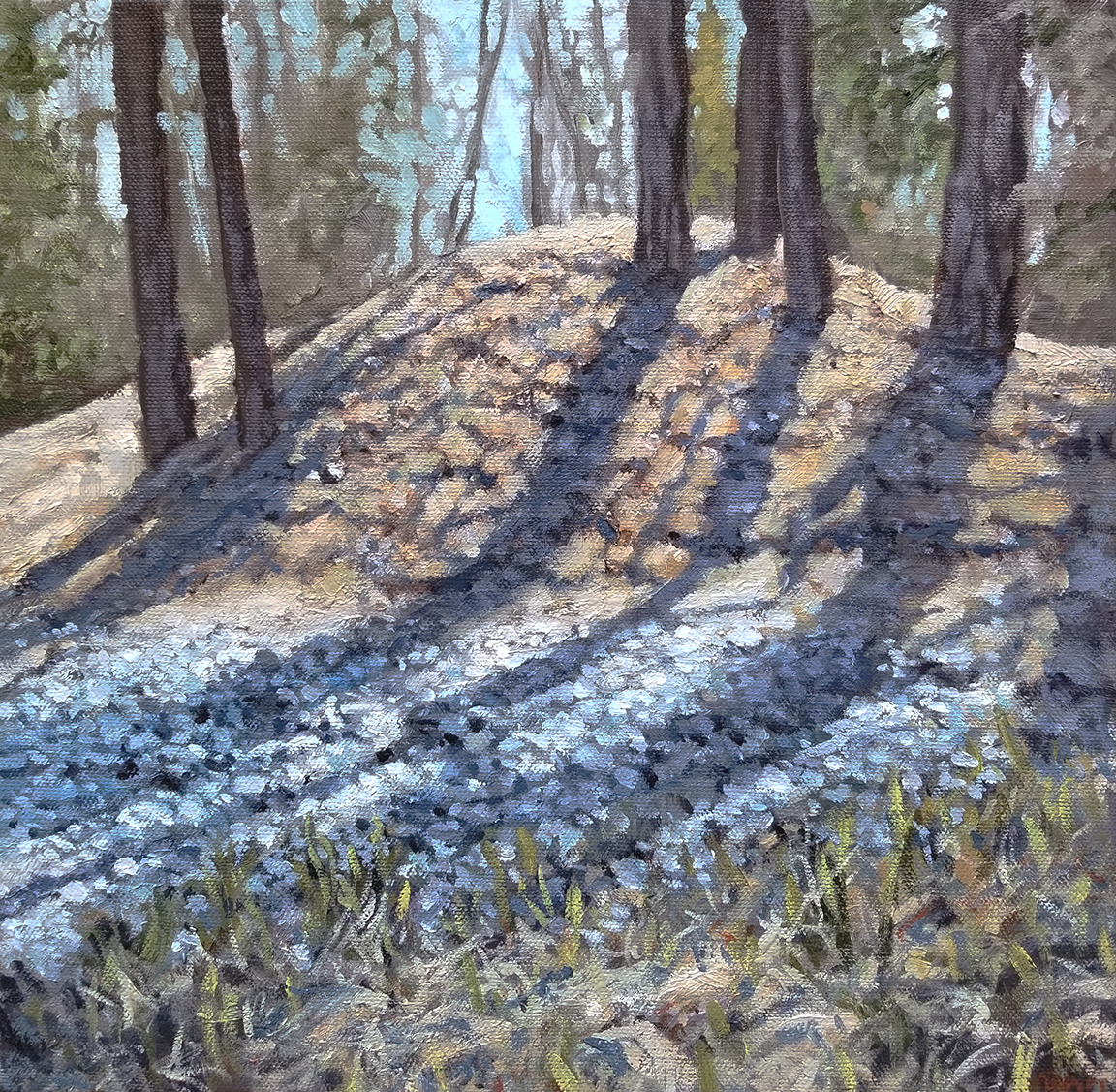
Psst. Hey. All you workaholic artists out there, let me tell you about a time I had some easy artistic inspiration without burning myself out…
When was the last time you took a break from bending over your easel and decided to go outside? Believe it or not, there’s more to life than putting paint to canvas or pencil to paper and maybe it will just get you excited to share it -visually! – with the world.
A good friend invited me on his birthday trip to Suncadia, Washington a couple of years ago. We golfed (poorly) in the sun, played some fun games, and had all sorts of great conversations. Not only that, but we went down this enormous outdoor staircase that led us to a running stream where we spent too much time skipping rocks and challenging each other’s throwing accuracy.
On our way back up the hill, I saw a beautifully simple little sight. Sunlight was filtering through the branches of a small crop of trees sitting on a tiny hill. Something about it hit me in a way that I wasn’t expecting. It spoke of lazy outdoor days, enjoying the sun’s warmth when there’s still a little chill in the air. Being without paint and unprepared to set up for a painting, I snapped a quick picture for use later. Being that I had some artistic inspiration, I was determined to paint this piece.

When I arrived home I decided to set to work on the painting. I selected a small canvas (10×10 inches) that would serve to display the setting with enough detail and impact, though not overwhelm the viewer in its size. I really felt the small canvas would help to serve the simple nature of the scene, not overcomplicating things with massive presence. I also just wanted to work small.
I had been working a lot with limited palettes at the time of this painting. A limited palette is an approach to painting that encourages the artist to choose as few paints as necessary for the project. Color is very relative and this creates a framework for the artist to work simply. I chose Yellow Ochre, Burnt Sienna, and Phthalo Blue, along with a White (can’t remember if it is Titanium or Zinc) and Raw Umber. This allowed me to get a good range of colors without getting overwhelmed by a huge selection of paint options. I often use Winsor & Newton oil paint (they have a wide range of qualities that can fit any person’s budget).
Getting at it quickly was pretty important for me. I wanted to really make sure that the painting had a good amount of life to it and I truly believe that the more free a painter’s strokes are, the easier it becomes to imbue visual interest. The way we use our paintbrushes can absolutely communicate how we are feeling, in subconscious ways that even unaware viewers can perceive. It’s like talking on the phone in a good mood versus a bad mood. It can be heard in the voice, despite any of the word choice.
Using a stiff brush allowed me to get some nice textured and lively strokes on the canvas. Having that right amount of tension from the hand to the brush to the spring of the canvas imbues the painting with a personality that may not come through in just the colors and composition. I ended up being very happy with the way the preliminary layers were coming together.
Overall, I wanted to make sure that my enjoyment of the outdoors on that trip to Suncadia would come through in the painting. I always seem to work more enthusiastically when I experience the artistic inspiration that quiet and peaceful moments can provide – it would be very satisfying to communicate and share that expression with others.

Despite all of the early artistic successes with the piece, I didn’t know when to stop. That’s a huge learning curve for painters. Maybe it’s weird to hear an artist question their judgment on their own blog that’s part of their website where they run their business. I think it’s more important to be honest about how I was feeling regarding my work. I just didn’t know how to maintain the freshness of the painting, as I added more detail and more layers of paint.
Let this be a lesson to you! And me. I don’t think my painting is bad, by any means, but I do wonder if it could have been better if I had left it alone or been more selective with my “improvements”.
The colors were also a learning experience for me. While I am fond of the painting, I do think that some of the colors were really challenging. The thing about direct sunlight is that it can reflect off of surfaces, such as grass, and become very bright. However, in doing so, it loses a lot of the intensity of color that we hope to find in paintings. So, there’s a choice that the artist has to make, which is between adherence to realism and adherence to visual interest. I’m not sure there is a right answer, but I do wonder if I chose the correct path.
One technical thing that can add to the difficulty in painting with enough color intensity is the photo reference. Great photos are the result of a good photographer and a great edit. Cameras don’t work exactly like our eyes do, so there can often be a big difference between the way we see something in person and the way it comes to us through a photo capture. Contrast, brightness, intensity, and even perspective can be altered in a way that is just not as satisfying as what we are seeing in person.
If you are experiencing any issues like these that are getting in the way of communicating your artistic inspiration, I would recommend trying to find ways to introduce saturated and intense colors. Just try it in a few places and you might find yourself thinking entirely different about your painting. You may even be encouraged to increase the vibrancy of all your colors.
The artistic inspiration came to fruition, eventually, when I put down my paint and brushes and called it. Happily, I walked away from the painting feeling like I had accomplished something decent and learned a lot along the way. That really is what I hope for most when I paint, that I will learn something. And most times, I do.
So, I added texture, color, balance, harmony, and eventually my stamp of approval. I do not think it is my greatest painting, by any means, but I do look at it occasionally and find myself studying aspects of it, with a grateful heart and a happy smile.
Here is a short series of three phases of the process. You can see how I started, began to adjust my colors, and then did some final adjustments to bring some more interest back in. Scroll back to the reference to see the changes I made, the things I de-emphasized, and the creative choices I made in a journey to simplify and economize my colors. You might also notice how my limited palette did in replicating the original colors.

While the first image in the process has a nice earthy quality to it and a good balance in the values, I do recognize the polish of the final image and how it conveys the textures and features with more crispness. I think I could balance my strokes a bit more, in hopes to keep that casual feel that is happening in the first image. I also could stand to control my use of white a bit.
So, there’s another Art Story from me, giving you a little background on one of my paintings. I’ve always enjoyed getting some behind the scenes looks at how people work and what they think of what they’ve created (warts and all). I hope you enjoyed this post and will find yourself in the midst of artistic inspiration sometimes soon.
You can find a print of this painting here.
You can also read my Art Story about my Haystack Rock painting here.
